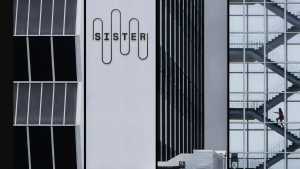
Award-winning typeface designer Kris Sowersby is the founder of Klim Type Foundry, and is based in Wellington, New Zealand. He has won awards for his type designs and became a member of the Alliance Graphique Internationale (AGI) in 2013. At the 2015 AGI Open in Switzerland we had the chance to ask Sowersby about the public redesign of the New Zealand flag.
At the time we talked to Sowersby there were only four designs (the fifth was announced a couple of days later) and he considers only the original four finalists in his answers.
"At the moment we are trying to redesign our flag in a very public manner, and it has been an interesting debate because it has cost $26 million and the referendum is binding, which means that it doesn't matter how many people vote – it's going to be voted in one way or another," says Sowersby. "There is a list of four final flags: three of them kind of look the same, and one of them has got a koru. The koru is a very traditional Māori motif – it is the unfurled fern."
In May 2015 the New Zealand government opened submissions for a new New Zealand flag to the public. The redesign was meant to start debates about New Zealand’s national identity: but perhaps it has opened up a host of national insecurities and uncertainties. How do New Zealanders imagine the world see them? How do they perceive themselves? And which of these questions should the flag try to answer?
The government have spent $26 million on the campaign. In the early stages of the submissions, a poll by The New Zealand Herald suggested that only a quarter of the population were interested in having their current flag replaced anyway.
"There were 10 000 flags submitted publicly – it was a government process, it was all very transparent and all the rest of it. The diversity [of submissions] was amazing and we're a young country still, so we don't really know exactly what it is that we want on our flag, or why we even want to get rid of the old one. People think of it as like the flag is going to be this big symbol for New Zealand and it's basically a country logo, which is a terrible way of thinking about it. But people are thinking about it in terms of what other people will see or interpret it as. I don't know how people see New Zealand."
A fifth finalist joined the four original flags –three ferns and an unfurled fern – last week. The Red Peak, by Aaron Dustin, was included in the shortlist after 52 000 people signed a petition asking that it become a finalist. New Zealand’s Prime Minister, John Key, could hardly ignore the petition, given that this whole campaign is based on allowing the country's people choice.
Interestingly, the "flag consideration panel", which selected the first final four designs from the 10 000 odd that were submitted, has no design-minded people on it.
"There is a professional body called DINZ – the Designers Institute of New Zealand, and there are a lot of really good designers in New Zealand, but they weren’t even talked to or contacted for this entire process," says Sowersby. "So the government essential attitude is that design is something that happens, but doesn't acknowledge that there is an official body that do it."
"DINZ consulted a little bit, half way through the process: they made a 10 minute video on what makes a good design and gave a presentation to the panel, six or eight people made up of non-designers – there is not one really visual person on the entire thing. So that might give you an idea of the New Zealand cultural attitude towards design!"
The first public referendum to decide the most popular finalist will be held later in 2015. A second referendum, which will put the winning finalist in a vote against the current flag, will take place in March 2016.
"There is an entire possibility that you go through this whole process and we'll be stuck with the old one, which puts us in a double bind – because the four options are terrible. So if we do get a new one, it is going to be shit, and if we don't get a new one it’s going to be shit. You can see it funnelling towards this compromised failure. It's amazing; it's the most public form of design I've seen. It's brilliant and terrible at the same time."






